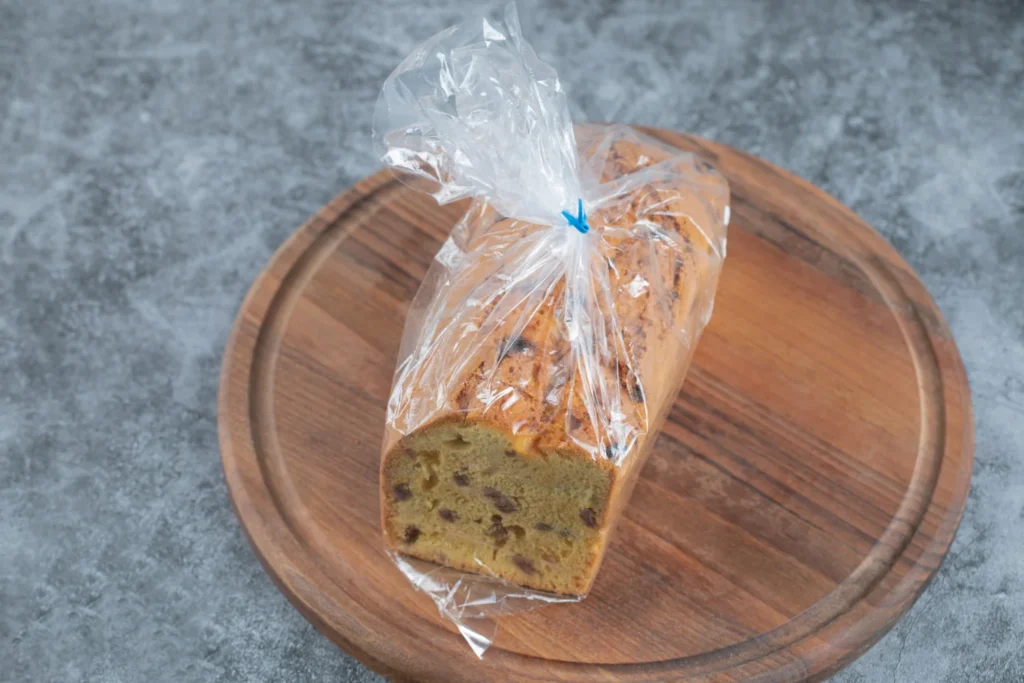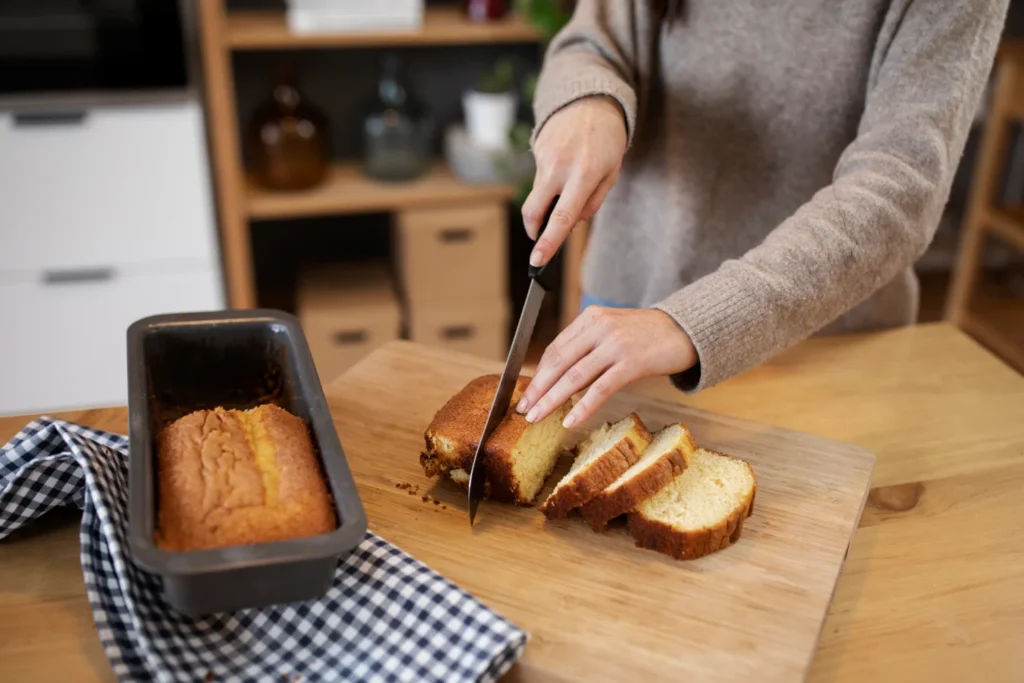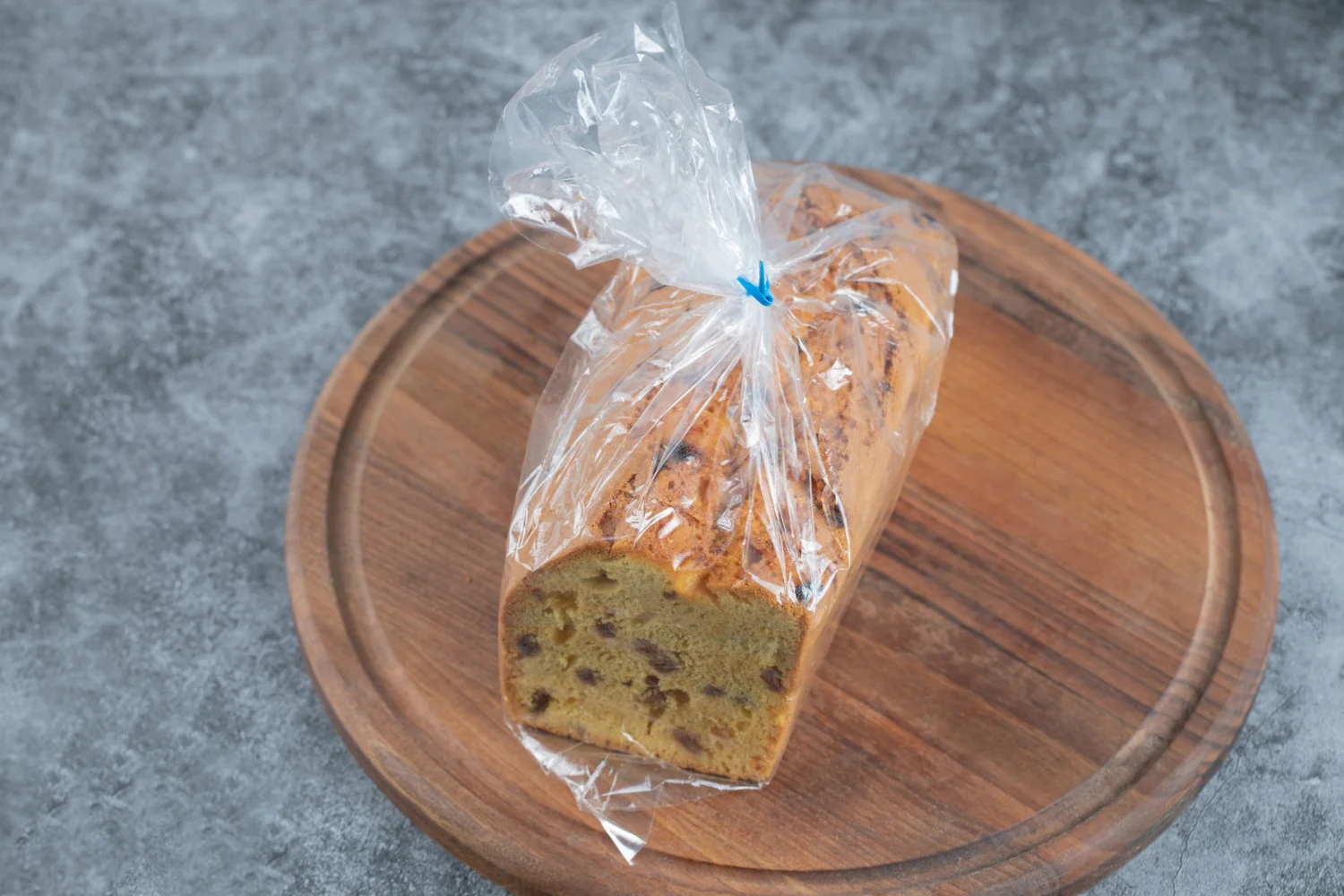How to Store Bread and Keep It Fresh For Months? Read Here!
Have you ever bitten into a slice of bread only to discover it’s as hard as a rock? Or worse, opened the bag to find a fuzzy green surprise? If so, you’re not alone. Bread storage is a surprisingly complex topic, but fear not! We’re here to demystify the process and share insider tips on how to keep your bread fresh, flavorful, and free of unwanted mold.
Whether you’re a sourdough aficionado, a sandwich lover, or just someone who appreciates a good slice of toast, this guide will equip you with the knowledge you need to become a bread storage pro.
Contents
- How to Store Bread After Baking
- 1. Freeze it
- 2. Plastic, Paper Bags, or Bread Boxes?
- 3. Where Do You Store Fresh Bread? At Room Temperature? Or in the Fridge?
- 4. Fermentation as a (Natural) Preservative
- 5. What About Mold?
- Freeze Bread for Long-Term Storage
- How Long Can You Store Bread?
- Common Bread Storage Mistakes to Avoid
- What If My Bread Goes Stale?
- How Do You Store Homemade Crusty Bread?
- A Loaf for Every Storage Method
- Bread Storage Tips for Different Climates
- Frequently Asked Questions
How to Store Bread After Baking
Proper storage of bread is crucial to maintaining its freshness and preventing mold. Once your bread has cooled completely, you have several options for storage,
1. Freeze it
Preserving the freshness of your bread goes beyond storage on the countertop. In fact, your freezer can become a surprising ally in keeping loaves from going stale. To maintain the best quality, wrap the bread tightly in plastic wrap. For whole loaves, consider a double layer for extra protection against freezer burn. Before you toss it in, don’t forget to label and date each package.
To freeze your bread, you have options. Whole loaves can be frozen as is, while slices can be stored in a zip-top bag. If you’re freezing slices, placing a sheet of parchment paper between each one can prevent them from sticking together upon thawing. Your frozen bread will retain its quality for up to 3 months (or even longer!), giving you a ready-made stash for toast, garlic bread, sandwiches, or even homemade croutons.
I’ve personally found that freezing bread not only extends its shelf life but also results in a surprisingly satisfying texture when toasted. It’s a game-changer for those of us who love the taste of fresh bread but can’t always finish a whole loaf before it starts to harden.
How to Defrost Frozen Bread
To defrost, simply leave the desired amount of bread in the fridge overnight, or let it thaw at room temperature for a few hours. If you’re short on time, you can also reheat frozen slices directly in the toaster or oven. Be sure to remove any icy bits from the bread after thawing and unwrap it before reheating to prevent a soggy crust. If you’re toasting the bread, this will also help restore its crispiness and serve up a delicious slice that tastes almost as good as fresh!
READ: Can You Freeze Sourdough Bread
2. Plastic, Paper Bags, or Bread Boxes?
The best way to preserve the freshness of your bread at room temperature depends on what kind you have. Everyday sandwich bread stays soft and moist in a plastic bag, but be sure to squeeze out the air and twist tie it to prevent mold from growing.


On the other hand, if you’re storing artisan loaves, brioche rolls, or other breads with added fat, paper bags are preferable. They’re breathable and help prevent these types of bread from becoming soggy.
For those who keep a variety of breads on hand, a bread box can be a worthwhile investment. A good bread box promotes air circulation, which is key to preventing staleness. However, remember that they can be bulky and take up counter space.
If you don’t have a bread box, no worries! Many bakers store their bread in a Dutch oven or bread pan with great success. It’s a simple, effective alternative that can help keep your bread fresh for days.
How to store homemade bread without plastic: If you’re looking for an eco-friendly alternative to plastic, consider using a linen bread bag or a clean kitchen towel. Simply wrap the bread tightly and store it in a cool, dry place.
The bottom line: The bottom line is that you need both moisture and air to guarantee freshness. Freezing bread is a great option for long-term storage. For the best results, wrap whole loaves or individual slices tightly in plastic wrap before placing them in a labeled and dated zip-top bag. Frozen bread can last for months and is perfect for toast, garlic bread, sandwiches, or even homemade croutons. To defrost, simply leave the bread in the fridge overnight or thaw it at room temperature for a few hours.
TIP: My storage preference:
- I reuse food-grade plastic bags that come with sandwich bread or produce from my CSA veggie delivery for storing boules and other artisan loaves.
3. Where Do You Store Fresh Bread? At Room Temperature? Or in the Fridge?
Most bakers agree that storing bread in a cool, dry spot at room temperature is the way to go. Both heat and moisture can speed up the staling process and encourage mold growth. Whether you use a pantry shelf, a countertop bread box, or simply a designated spot in your kitchen, make sure there’s enough air circulation around the bread to prevent it from getting damp.
While refrigeration might seem like a logical choice for food storage, it’s actually not ideal for bread. The cold temperature causes the starch molecules in bread to recrystallize faster, resulting in a stale texture. However, in a restaurant setting, refrigeration can be used to extend the shelf life of bread due to the high turnover rate and controlled environment.
READ: How to Make Focaccia Bread
How to Refrigerate Bread
If you must refrigerate bread, wrap loaves in several layers of plastic wrap to create a moisture barrier. This will help prevent the bread from drying out too quickly. Bread can be chilled for several days but should be reheated before serving. Be aware that reheating refrigerated bread can sometimes result in a slightly rubbery texture. To avoid this, warm the bread in a foil packet or, if it’s a rustic loaf, “naked” on a baking sheet for a few minutes to crisp up the crust.
4. Fermentation as a (Natural) Preservative
Sourdough bread is a prime example of naturally preserved bread. The fermentation process creates an acidic environment that inhibits the growth of mold and bacteria, keeping the bread fresh for a longer period. The enzymes produced during fermentation also help break down the complex carbohydrates in the dough, making it easier to digest. So, while sourdough might seem like a trendier choice, it’s actually an age-old method of bread preservation that’s worth exploring.
Even if you’re not making sourdough, adding a bit of fat to your dough, such as butter or oil, can help extend the shelf life of your bread. It slows down the recrystallization of starch molecules, which contributes to staling. This is why enriched bread like challah or brioche tends to stay softer longer than lean sandwich bread.
5. What About Mold?
Mold thrives in warm, moist environments with ample food sources. And guess what? Bread offers all of those things. That’s why it’s important to avoid storing bread in areas of excess heat and humidity, such as on top of the fridge, near the stove, or in a fruit bowl.
Years ago, I learned this the hard way when I kept a plastic bag of bread in a drawer next to the dishwasher. The combination of warmth from the appliance and moisture from the bread created the perfect storm for mold growth. I won’t soon forget the sight of those green, hairy spots on my rolls and tortillas. The same goes for raisin bread or other types of sweet bread, which are particularly susceptible to mold due to their higher sugar content.
Freeze Bread for Long-Term Storage
For long-term storage, the freezer is your best bet. The low temperatures slow down the retrogradation process (the chemical reaction that causes staling) by minimizing moisture migration and starch recrystallization in the bread. You can freeze bread either whole or sliced, depending on your preference.
First, let’s look at freezing slices.
Freezing Slices
The practice of freezing individual slices of bread is a bit of a secret weapon for bread lovers. It offers the best of both worlds: conveniently sliced bread that can be reheated at a moment’s notice. Frozen slices can easily last a month in the freezer, giving you the luxury of freshly baked bread for toast whenever you want it. Years ago, I discovered this trick when I was baking the perfect toaster-sized sourdough boules and batards in my Breville Smart Toaster. It had an extra-long slice setting, so I started freezing the extra slices to enjoy later. While that toaster may be an added expense for some kitchens, the process is simple with any loaf of bread.


First, ensure the loaf of bread has cooled thoroughly. Then, slice the bread from end to end, adjusting the thickness of the pieces to your liking. Place a single layer of slices in a Ziploc bag, alternating the pattern so that one slice lays bottom to side to side and the next slice on top goes 90°. This helps prevent them from sticking together. Continue layering until the bag is full, then press out as much air as possible before sealing. Freeze the bag flat. When you’re ready to enjoy, simply pop a slice or two into the toaster straight from the freezer. If you don’t have a resealable bag, a plastic freezer bag will work just as well.
Freezing Whole Loaves
The other method involves freezing the entire loaf of bread, which is ideal if you plan on using the bread in the future. For example, I often buy two loaves of bread at a time, knowing I won’t be able to finish both within a week. I let the second loaf fully cool, then wrap it tightly in plastic. The wrapped loaf goes into a freezer Ziploc bag with the air squeezed out before being placed in the freezer. When I’m ready to use it, I simply defrost the bread in the fridge or on the counter overnight until it thaws completely, then store it using one of the methods described earlier.
READ: Bread for Bruschetta
How Long Can You Store Bread?
The shelf life of bread depends on several factors, including the type of bread, storage method, and environment.
- Room temperature: Most commercially produced bread will stay fresh for 2-4 days when stored at room temperature in a cool, dry place. Homemade or artisan bread, which often contains fewer preservatives, might last for 3-5 days.
- Refrigerator: Storing bread in the refrigerator can extend its shelf life to 7-14 days. However, refrigeration can also cause bread to dry out more quickly, so it’s crucial to wrap it tightly.
- Freezer: Frozen bread can last for up to 3 months without significant loss of quality. To freeze, wrap the bread tightly in plastic wrap and then place it in a freezer-safe bag.
Remember: These are just general guidelines. Always check the “best by” date on store-bought bread and use your senses to determine if bread is still good. If it smells off, looks moldy, or has an unusual texture, it’s time to discard it.
Common Bread Storage Mistakes to Avoid
Even with the best intentions, it’s easy to make mistakes when storing bread. Here are some common pitfalls to avoid:
- Refrigerating bread: The refrigerator’s cold, dry environment actually accelerates staling. Unless you’re dealing with a commercial bakery setting with high turnover, it’s best to keep your bread at room temperature.
- Leaving bread unwrapped: Exposed bread dries out quickly and becomes stale. Always store bread in a bag, bread box, or other container to protect it from air.
- Overcrowding your bread box: Air circulation is key to preventing mold. Make sure your bread box isn’t too packed, and leave some space between loaves.
- Storing bread with fruit: Fruits release ethylene gas, which can accelerate spoilage. Keep your bread separate from your fruit bowl.
- Ignoring the “best by” date: While bread can often be consumed past its “best by” date, it’s important to use your senses. If the bread smells off, looks moldy, or has an unusual texture, it’s best to discard it.
What If My Bread Goes Stale?
Don’t despair if your bread gets a little stale before you can finish it. There are a few ways to revive it! You can sprinkle the loaf with a little water and bake it in the oven for a few minutes. This will help restore some of its moisture and texture. Another option is to make breadcrumbs or croutons out of the stale bread. Simply cut it into cubes, toss them with olive oil, herbs, and spices, and bake them until golden brown and crispy. This is a great way to use up leftover bread and add flavor to your meals.
How Do You Store Homemade Crusty Bread?
Homemade crusty bread requires special care to maintain its texture. For the first day, it’s best stored unwrapped at room temperature, cut-side down on a cutting board. This helps preserve the crust’s crispness. After the first day, wrap it loosely in a linen or cotton bread bag (or a paper bag in a pinch) to keep it from drying out too quickly. If you don’t plan on eating it within a few days, freezing is the best way to maintain its quality.
A Loaf for Every Storage Method
While the general guidelines for bread storage apply to most types, some breads have unique needs due to their ingredients and baking methods.
| Bread Type | Storage Tips | Considerations |
| Sandwich Bread | Plastic bag, room temperature | Prevents drying out, but watch for mold |
| Artisan Loaves | Paper bag, room temperature or bread box | Allows crust to breathe, maintains texture |
| Brioche, Challah | Airtight container, room temperature or refrigerator | High fat content helps retain moisture longer |
| Gluten-Free Bread | Freezer, well-wrapped | Dries out quickly, freezing preserves freshness |
| Sourdough | Room temperature, wrapped in linen or beeswax wrap | Natural preservative qualities, breathable wrap |
Bread Storage Tips for Different Climates
The ideal storage method for bread can vary depending on the climate you live in. In humid environments, it’s crucial to prevent excess moisture buildup, which can lead to mold. Using a breathable paper bag or a bread box with good air circulation can help. In dry climates, retaining moisture becomes a priority. Storing bread in a plastic bag or a tightly sealed container can help prevent it from drying out too quickly.
Conclusion
Storing bread properly is key to maximizing its freshness and preventing waste. Remember, there’s no one-size-fits-all solution, as the best storage method depends on the type of bread and your intended use. Whether you freeze it for long-term storage, keep it on the counter for immediate enjoyment, or utilize a combination of techniques, taking care of your bread ensures you’ll savor every delicious bite.
__________________________
Frequently Asked Questions
What is the best way to keep bread fresh longer?
You can freeze, store your bread in paper or plastic, or use bread boxes. All are your friends when it comes to bread storage! But the critical factor is where you store it.
Is it better to keep bread in the fridge or counter?
Room temperature is usually best for bread, unless you live in very humid conditions. The fridge can introduce moisture and make bread more susceptible to mold.
Where’s the best place to keep bread?
Don’t leave bread in a sealed plastic bag or near the stove or on top of the fridge, as these are all areas with sources of heat. Your best bet is a dark, cool section of your counter or pantry.
Can I store bread in the freezer?
Absolutely! If you can’t eat your household staple within a few days, the freezer is a great option to keep it fresh. In fact, freezing preserves the qualities of freshly baked bread the best. Prime your bread for freezing by wrapping it tightly in plastic wrap and placing it in a freezer-safe bag. Your bread will remain frozen and tasty for up to three months.





